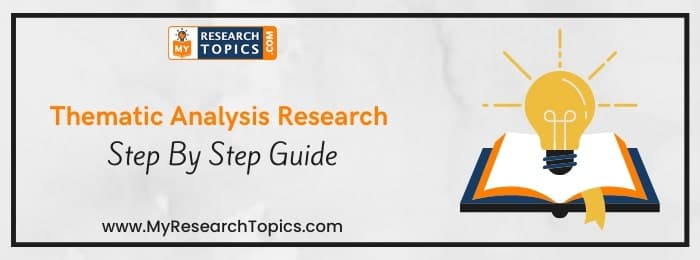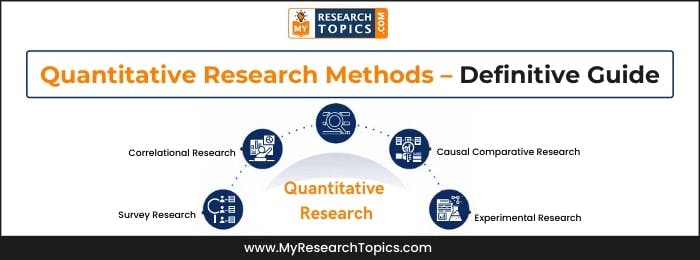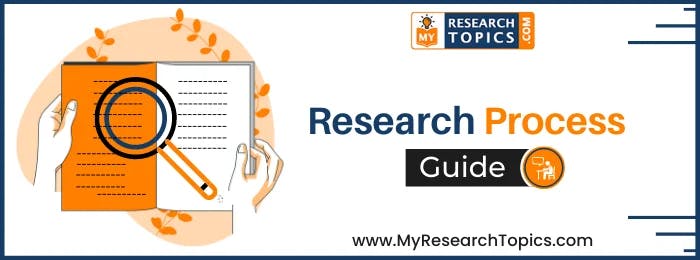Thematic Analysis for Research – Step By Step Guide
Published 16 October, 2023

Thematic analysis (TA) is basically a research methodology for analyzing qualitative data in many disciplines and fields and can be applied in lots of different ways, to lots of different datasets, to address lots of different research questions. In the thematic analysis, you need to prepare the different themes on the basis of the questions and answers of respondents.
Thematic analysis is a research technique that presents data in order to discover themes across a dataset. To do this, a common set of codes are applied to the text and then grouped together into categories or themes.
In order to prepare themes, need to closely analyze the data which you have collected during an investigation. It is the research method that mainly concentrates on organization and providing detailed information. Thematic analysis is the technique that will allow you to generate meaning from data.
It is the research technique that is applicable to texts like transcripts of the interview. Thematic analysis is a flexible research approach by utilizing which you can easily analyze the opinion of different people. The main objective of thematic analysis is to provide detailed information. Another objective is to enable an individual to develop an understanding of the answers of respondents.
For example, a researcher performs a study with the intention to gather information about the factor which motivates employees to retain their job in a specific organization? You can perform interviews for collecting the facts. After that, you need to analyze information and design different themes on the basis of common answers of respondents. Results of data analysis revealed that the majority of respondents have thought that it is the effective reward and incentive scheme which motivates them to retain their job in a company.
In this article, we will discuss the uses, approaches, and step-by-step process of conducting thematic analysis.
Uses of thematic analysis in research
- The researcher uses the thematic analysis technique for analyzing the pattern of responses.
- You can utilize thematic analysis for analyzing the views of people.
- You can also use Thematic analysis for the organization of information that you have collected using different techniques such as interviews, surveys research, focus groups, etc.
- Students can utilize it for analyzing both large and small sets of data.
- You can use different themes for identifying the root cause of the issue.
- Thematic analysis is suitable for presenting the findings of research in a systematic manner.
- It is the analytical technique that you can utilize for performing exploratory investigation especially in those studies where you are not at all aware of the pattern.
Read Also: Content Analysis For Research
Approaches of thematic analysis in research
Before beginning the procedure of thematic analysis it is very crucial for you to clearly identify the approach which you will apply for the identification of themes. There are basically two approaches that you can apply for the identification of themes these are deductive and inductive.
The two most common approaches to thematic analysis are:
- Inductive approach: In inductive, you need to use original data for designing the structure. There is no existing theory or framework which you can use for analyzing the facts. In an inductive approach to thematic analysis, all the themes are closely related to information. This approach is useful when the researcher has no idea about the research topic or subject.
- Deductive approach: You can utilize the deductive research approach when you have already address the research questions. Deductive research to thematic analysis is very much appropriate when a person does not have a sufficient amount of resources.
See Also this: Inductive & Deductive Research Approach Differences
Process of conducting thematic analysis in research
The further process of thematic analysis includes different phases:
Step 1 – Familiarize yourself with the data
It is the initial phase where you need to develop an understanding of facts. You need to properly analyze the interview and note important points, as this technique would help you in becoming familiar with the subject or topic. Where the study involves an observational technique of data collection then you can easily design themes.
Step 2 – Create Codes and collate them with data
This is a stage where you need to give codes to data. Code is brief decryption and a list of interesting facts which you have discovered during an investigation. Codes should be clearly defined, ensuring that they are not interchangeable or redundant.
A researcher can use as many levels of coding as they think will be useful. But too many levels could make the data hard to organize and understand. Then after that, you have to organize information in systematic order. You can use a special type of software for the coding data.
Step 3 – Designing of themes
This phase involves examining the codes and collated data to identify significant broader patterns of meaning (potential themes). It then involves grouping relevant information into categories based on these identified themes, so that you can work with your findings.
At this phase, you need to review the codes in order to analyze the pattern of responses It is a stage where you might find some of the codes to be irrelevant.
Step 4 – Reviewing of themes
This phase involves checking the candidate themes against the dataset to determine that they tell a convincing story of data and one that answers the research question. In this phase, themes are typically refined which sometimes includes them being split into two or combined with other topics. Our TA approach defines a theme as a pattern of shared meaning underpinned by a central idea or concept.
It is basically one of the important activities which you need to perform in order to confirm that themes are useful and accurate.
Step 5 – Defining themes
After reviewing you need to prepare the final list of themes. Then after that defining the themes is very much crucial which includes providing a clear explanation about the meaning of each theme. Defining the theme includes naming the theme in such a manner that it helps an individual in understanding the data.
Step 6 – Writing your narrative
This is the last phase which mainly involves producing a meaningful report. It is a phase where you need to determine which themes in research have helped you in developing an in-depth understanding of data. Performing the verifications is very much crucial for you in order to confirm that accurate representation of findings has been done. In the report, you are required to provide an introduction about the topic, a description of methodology including detailed information about the techniques which you have applied for the collection of data.
Must See: Textual Analysis in Research
Other Related Guides
- Research Project Questions
- Types of Validity in Research – Explained With Examples
- Schizophrenia Sample Research Paper
- Quantitative Research Methods – Definitive Guide
- Research Paper On Homelessness For College Students
- How to Study for Biology Final Examination
- Textual Analysis in Research / Methods of Analyzing Text
- A Guide to Start Research Process – Introduction, Procedure and Tips
- Research Findings – Objectives , Importance and Techniques
- Topic Sentences in Research Paper – Meaning, Parts, Importance, Procedure and Techniques












